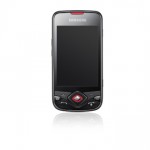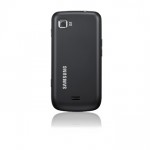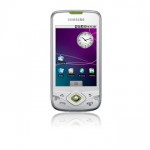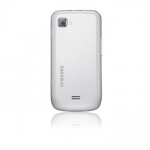No matter what I said before I’ve always been a hardcore iPhone fan. But I just couldn’t invest a laptop worth of money in a warranty-less iPhone 4 sourced from abroad. So I decided to shift camps, temporarily.
The biggest problem in my opinions with Android devices is the that there are too many to choose from. It’s surprisingly difficult to find a no-frills, budget Android phone (If you’re ready to increase your budget Nexus One is the best option in my opinion). After lots of reviews and spec comparison I decided to buy a Samsung Galaxy Spica. Now that I’ve spent some time with the phone, I’ll jot down a list of points that may affect your decision to buy this phone. The first part of the review deals with the hardware.
Physical Design & Features
- The body looks sturdy except the battery cover. The battery cover occasionally pops open when the phone is dropped from a height. I especially love the smooth back with a hard rubber feel that improves the grip.
- Dimension-wise the phone is pretty standard when it comes to smartphones.
- On the top there is a standard 3.5 mm headphone jack and a microUSB slot for charging/data. Kudos to Samsung for following the standards. The slot has a clumsy looking cover but it’s not too bad in day-to-day use.
- For someone switching from an iPhone, this phone has way too many buttons (6 face buttons + 5 button D-Pad + Camera + Lock/Unlock on right hand side + Volume rocker on left)
- Despite all these buttons Samsung couldn’t include a dedicated power button. Or they could’ve made the lock button to act as one on long press. But no, you need to long press the Call Hold button. It’s a nuisance because the button gets pressed accidentally in my pocket but it’s not a big issue as there are multiple choice and confirmation popups that follow preventing the phone from shutting down in your pocket.
Screen, Speakerphone & Camera
- The screen is gorgeous. At 3.2 inches it is a tad smaller than iPhone’s screen but the resolution is same and it looks sharper and brighter than the iPhone. Outside visibility is decent as well.
- The capacitive touchscreen isn’t as good as the iPhone. I’d say it’s 5-10% less accurate. Haptic feedbacks are stupid but you can turn them off.
- There is no multitouch. if you’re moving from an iPhone you’ll miss it. But else it’s not much of an issue.
- The volume rocker works as the mute on/off, vibration on/off button too. If you lower the volume to the least the phone goes into Silent mode which means no ringtones, no vibration. If you press volume up once, it goes into vibrate. Above that it acts as a volume rocker. It’s a bit confusing in the beginning but once you get the hang of it, it’s pretty convenient.
- The 3.2 MP camera is strictly average by current standards but it allows geo-tagging. The video recorder is below par.
- The speakerphone is loud and clear but it is positioned on the back inside the battery compartment. This means that if you keep your phone on bed or a cushion with screen facing up, the volume of the speakerphone reduces considerably.
Sensors
- The accelerometer sensor works well. I actually like the auto-rotate implementation more than iPhone because it waits for sometime before rotating. This prevents the accidental auto-rotation of screen which was an irritating feature of the iPhone.
- The phone, being a budget phone I believe, lacks 2 basic sensors – proximity sensor and brightness sensor. The brightness sensor can be compensated manually using a simple on-screen widget but proximity sensor is an issue. You need to hold the phone in a way that it doesn’t touch your face or else you’ll end up pressing some keys.
Communication
- The phone is pretty solid on the communication front. 3G, WiFi and Bluetooth 2.1 for data and A-GPS and Digital Compass for positioning.
- The phone signal is better than my old iPhone 2G and the voice quality is generally better too. The loud speaker helps ofcourse.
- GPS positioning takes some time to fix but it’s pretty accurate.
Internal Hardware
- The phone has a really snappy CPU running at 800 MHz. It’s much faster than most Android phones under 20k and is faster than iPhone 2G/3G as well.
- The 128 MB RAM is more than sufficient. Unless you load way too many apps the phone doesn’t seem to lag at all.
- The internal memory of 180 MB can be less if you install a lot of apps. But if it’s an issue you can always root your phone or wait for Android 2.2 (Froyo) where you’ll be allowed to move apps to SD card.
Battery
- The battery life is good for an Android phone but average for smartphones in general. With moderate usage the battery will easily last a day of usage. As with any smartphone you should make sure you turn off GPS, WiFi and Bluetooth when you are not using them.
- A major issue with the battery is that it’s not calibrated properly. You need to run a few full charge and discharge cycles to make it better. This gets even worse because the Android power management is pretty bad and the battery icon never reports battery properly. You can see the battery goto 50% in 5 min of charging but in reality it won’t be more than 10%.
Accessories
- The phone comes with a basic set of accessories including a 2GB memory card, an average pair of headphones/headset, a wall-charger and a microUSB cable which also doubles as a USB charger.
As far as the hardware is concerned Samsung Galaxy Spica has great internals but a lot of minor nuisances. But the best part is that at a price of Rs 13,500 the phone is an excellent introduction to Android. If you must you can go through the detailed specifications page at GSMArena.








6 responses to “Samsung Galaxy Spica i5700 – Android sans frills”
[…] a hands-on hardware review of this phone – check this out Samsung Galaxy Spica i5700 – Android sans frills [Part 1 – Hardware] | woikr More to come on how the software can be customized. Will keep you […]
I disagree with the author on the proximity sensor. Galaxy Spica has one, but it only works when the dial screen is on.. Normally when you attend a call, the screen is designed in such a way that no other link is present on the screen so there is no chance of pressing anything accidentally.. Just when you are speaking, if you want to get into the menu manually will it be a problem. That is not a big problem because you are getting into the menu manually so you should be able to get out of it manually as well..
I agree that the screen is designed to show no links but that's because there is no sensor to turn the screen/touch sensitivity off.
But it has happened to me so many times when the dialpad opens up by touching some part of my face and then some random keys get pressed. It does NOT have a proximity sensor. Check here http://www.gsmarena.com/samsung_i5700_galaxy_spic…
You can also check here..
http://www.knowyourmobile.in/samsung/samsung-gala…
But both the websites (one you quoted and the one which I quoted) are not official websites and they may be wrong. But check for yourself. Do the following… Just dial a number from your Spica using the Dialer, then take it close to your ears, hold it for a while. Then try pressing any other key.. Tell me what you see.. Your screen will be locked.. You will have to double tap it to release the lock.. That's due to proximity sensor… Try it yourself and let me know
So I decided to do the experiment as you mentioned. And it did get locked.
BUT, it's not the proximity sensor. You dial a number, open the dialpad, and wait for 10 seconds. It'll automatically get locked irrespective of the phone's positioning. Hence, it's a timer that just locks the dialpad. Try it out 🙂
[…] S from the Indian market. This is pretty much what happened last year, when Samsung discontinued Galaxy Spica just before launching the new series of Galaxy […]